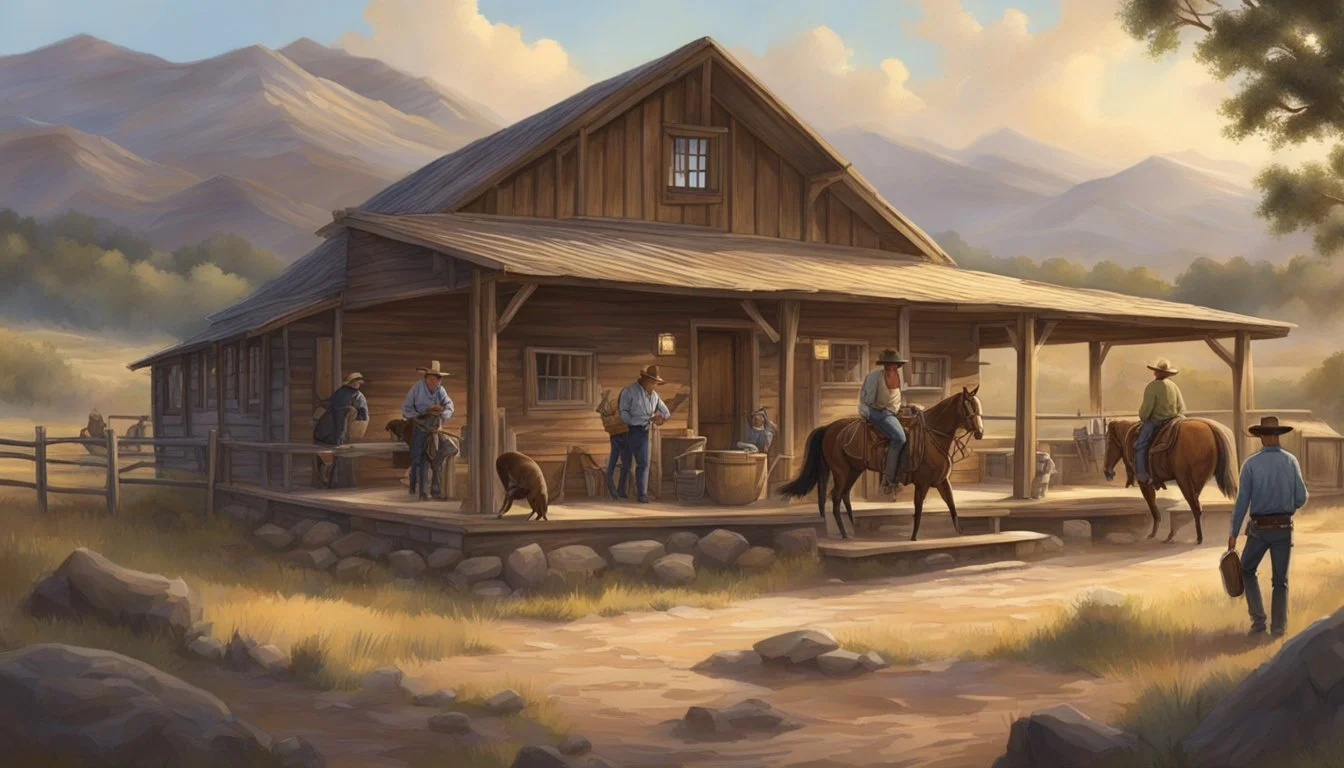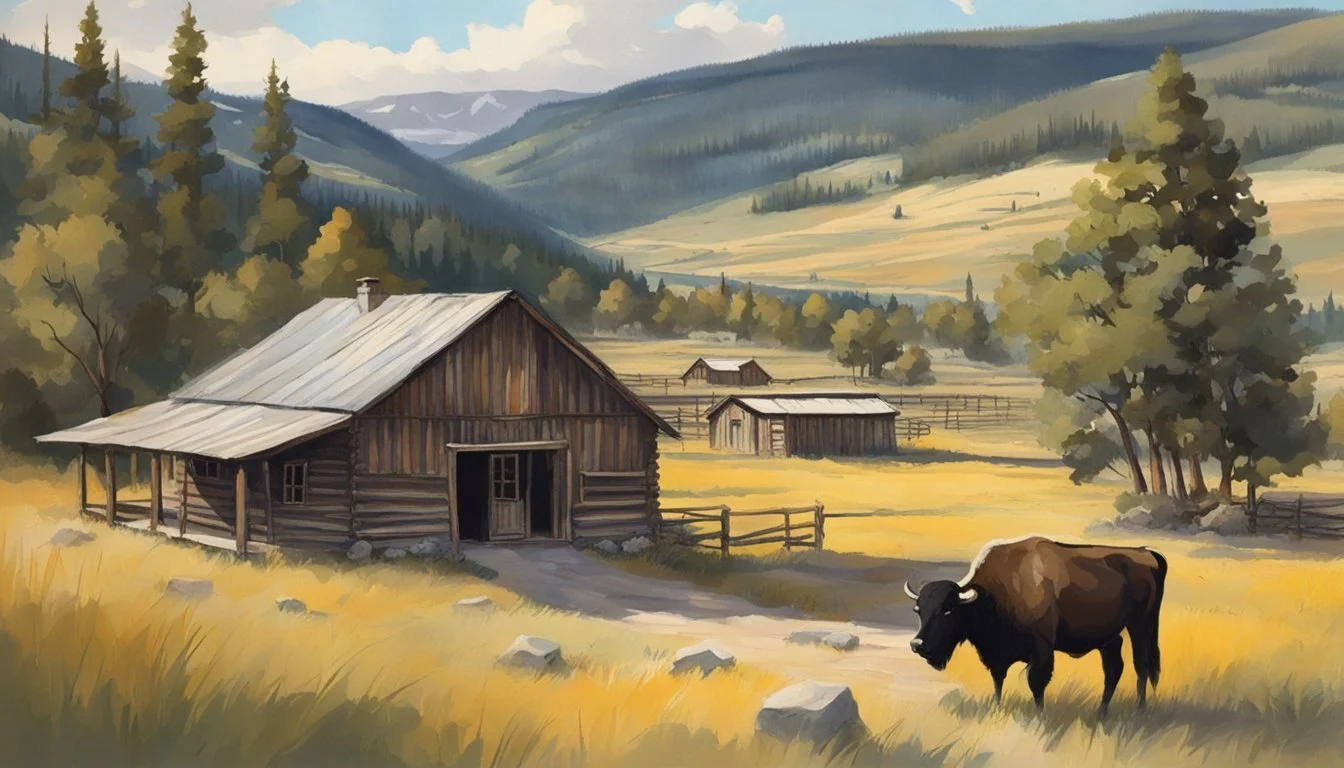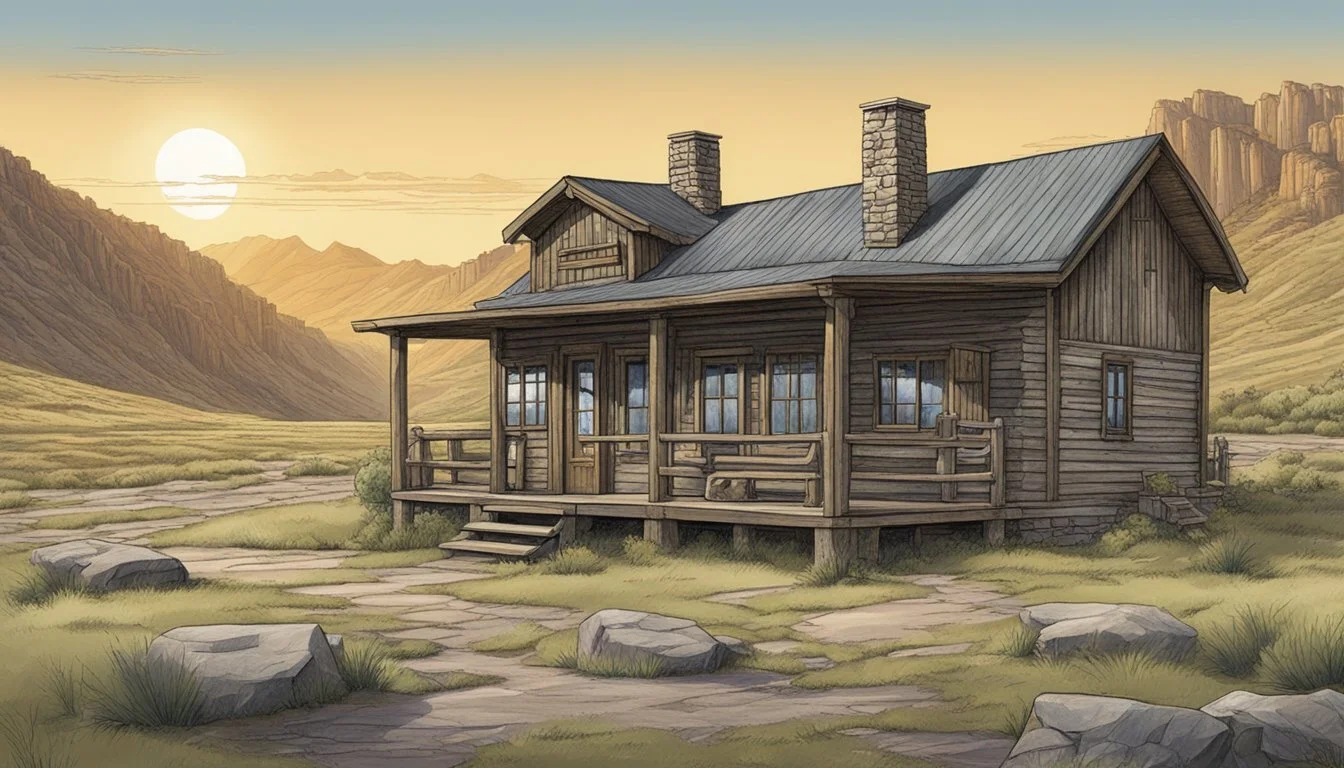The Significance of the Bunkhouse in Yellowstone's Ranch Dynamics
A Hub of Cowboy Culture and Power Struggles
The bunkhouse on Yellowstone's Dutton Ranch serves as more than just sleeping quarters for the cowboys. It's a central hub where relationships form, conflicts arise, and loyalties are tested. This communal living space reflects the gritty, no-frills lifestyle of the ranch hands and provides a stark contrast to the opulent Dutton family home.
The bunkhouse dynamics offer viewers a glimpse into the complex social structure of a modern working ranch, showcasing the camaraderie and tensions that exist among the cowboys. From heated arguments to moments of solidarity, the bunkhouse scenes reveal the depth of character relationships and provide crucial insight into the inner workings of the Yellowstone Ranch.
Beyond its role in character development, the bunkhouse symbolizes the preservation of a vanishing way of life. As urban sprawl threatens traditional ranching, the bunkhouse stands as a testament to the enduring spirit of the American West. It embodies the values of hard work, resilience, and brotherhood that define the cowboy ethos portrayed in the show.
The Historical Context of the Bunkhouse
Bunkhouses played a crucial role in the development of the American West, serving as communal living spaces for ranch workers and settlers. Their history intertwines with significant events and cultural shifts that shaped the region.
Origins and Evolution from the 1880s
The 1880s marked the emergence of bunkhouses as essential structures on ranches across the American West. These simple, rectangular buildings provided basic shelter for cowboys, ranch hands, and seasonal workers. Early bunkhouses featured sparse furnishings, typically including wooden bunks, a wood-burning stove, and minimal personal storage.
As ranching operations expanded, bunkhouses evolved to accommodate larger crews. By 1923, many had been upgraded with improved amenities like electricity and indoor plumbing. The Chief Joseph Ranch, now famous as the filming location for "Yellowstone," exemplifies this evolution, blending historical architecture with modern comforts.
Significance in the Nez Perce War and the American West
The Nez Perce War of 1877 profoundly impacted the Bitterroot Valley, where many bunkhouses were later established. This conflict between the U.S. government and the Nez Perce tribe led by Chief Joseph reshaped land ownership and use in the region.
Bunkhouses became symbols of the changing landscape, representing the shift from Native American territories to settler-owned ranches. The structures served as temporary homes for workers who maintained these vast properties, including areas like the Chief Joseph Ranch.
In Yellowstone National Park, established in 1883, bunkhouses housed park rangers and early tourists. These buildings became integral to the park's operations and the broader narrative of conservation in the American West.
Cultural Influence and Media Portrayal
The bunkhouse in Yellowstone has become an iconic setting, influencing popular culture and shaping perceptions of modern ranch life. Its portrayal offers insight into the social dynamics and daily realities of cowboys working on a large cattle operation.
Representation in Paramount's Yellowstone
Paramount Network's Yellowstone showcases the bunkhouse as a central location for character development and plot progression. The series, created by Taylor Sheridan, presents the space as a microcosm of ranch hierarchy. Cowboys gather here, sharing meals, stories, and conflicts. Kevin Costner's John Dutton occasionally visits, reinforcing his role as patriarch and boss. The bunkhouse scenes reveal the camaraderie and tensions among the ranch hands, offering viewers a glimpse into the complex relationships that form in this tight-knit community.
Roles and Archetypes in Narrative Contemporary Program
Yellowstone's bunkhouse serves as a stage for various cowboy archetypes, each contributing to the show's narrative. Characters like Rip Wheeler embody the loyal enforcer, while Jimmy represents the novice finding his place. The space highlights the contrast between seasoned ranch hands and newcomers, exploring themes of mentorship and tradition. Female characters like Teeter challenge gender norms within this traditionally masculine environment. The bunkhouse storylines often reflect broader issues facing the Dutton family and the ranch, connecting the workers' experiences to the overarching plot.
Architecture and Design of the Bunkhouse
The bunkhouse on Yellowstone's Dutton Ranch blends rustic charm with functional design elements. Its architecture reflects the rugged Western aesthetic while serving practical purposes for the ranch hands.
Functionality and Authenticity in Design
The bunkhouse features a long, rectangular structure with a wooden floor and simple furnishings. Beds line the walls, creating a communal living space for the ranch workers. This layout emphasizes the transient nature of their lifestyle.
The design incorporates authentic materials and period-appropriate details. Rough-hewn timber, weathered metal, and natural stone elements contribute to the immersive Western atmosphere.
Large windows allow natural light to flood the interior, while also providing views of the surrounding landscape. Practical amenities like a shared bathroom and kitchen area cater to the daily needs of the cowboys.
Contribution of Production and Art Directors
Production Designer Cary White and Art Director Yvonne Boudreaux played crucial roles in crafting the bunkhouse's authentic look. They meticulously researched historical ranch buildings to ensure accuracy.
Set Decorator Carly Curry added carefully chosen props and decor to enhance the lived-in feel. Vintage saddles, worn boots, and personal effects of the characters bring the space to life.
The team's attention to detail earned them recognition for Outstanding Production Design. Their work on the bunkhouse and other ranch buildings contributes significantly to Yellowstone's immersive world.
The Chief Joseph Ranch, where Yellowstone is filmed, provided inspiration for the bunkhouse design. The production team adapted existing structures on the property to create a cohesive and believable ranch environment.
The Bunkhouse's Role on Dutton Ranch
The bunkhouse serves as the heart of ranch operations and cowboy culture on Yellowstone's Dutton Ranch. This iconic structure plays a crucial role in shaping the daily lives and relationships of the ranch hands.
Living Quarters of Ranch Hands
The bunkhouse provides a communal living space for the cowboys working on Dutton Ranch. It houses essential workers like Rip Wheeler, Lloyd, Colby, and Walker. The interior features rustic decor, including cowboy hats and Western-themed elements that reflect the American Western lifestyle.
Bunk beds line the walls, offering a place for ranch hands to rest after long days of cattle work. A common area allows for socializing and relaxation, fostering camaraderie among the workers.
The bunkhouse's design and layout emphasize functionality, accommodating the needs of hardworking cowboys in Montana's rugged landscape.
Influence on Ranch Dynamics and Hierarchy
The bunkhouse plays a significant role in establishing and maintaining the ranch's hierarchy. Rip Wheeler, as the ranch foreman, holds a position of authority within this space. His leadership is evident in how he interacts with other ranch hands in the bunkhouse setting.
The structure serves as a central hub for assigning tasks and discussing ranch operations. Important conversations and decisions often take place within its walls, influencing the overall management of Yellowstone Dutton Ranch.
Conflicts and alliances formed in the bunkhouse can have far-reaching effects on the ranch's dynamics. The close quarters create an environment where loyalties are tested and bonds are strengthened, directly impacting the Duttons' cattle ranching empire.
Life Inside the Bunkhouse
The bunkhouse serves as the epicenter of ranch hand life, shaping daily routines and social interactions. Its cramped quarters and sparse amenities reflect the harsh realities of ranch work while fostering a unique camaraderie among the workers.
Daily Routines and Responsibilities
Ranch hands rise before dawn, congregating in the bunkhouse to prepare for the day ahead. They don work clothes and boots, often stored in small lockers or under beds. Breakfast is a quick affair, with some opting for coffee and a snack before heading out.
Throughout the day, the bunkhouse remains largely empty. Workers return briefly for lunch breaks or to grab supplies. In the evenings, exhausted hands file in, seeking respite from the day's labor.
Cleaning duties rotate among occupants. Beds must be made, floors swept, and common areas tidied. Personal hygiene is a challenge, with limited bathroom facilities shared by many.
Social Dynamics and Personal Artefacts
The bunkhouse fosters a tight-knit community. Workers share stories, play cards, and discuss ranch affairs. Hierarchy exists, with seasoned hands often claiming the best bunks or prime spots near heat sources.
Personal space is limited. Small shelves or apple boxes serve as makeshift storage for toiletries, medications like Tylenol for aching muscles, and prized possessions. Photos of family or rodeo victories adorn walls above bunks.
Snuff cans and work gloves litter nightstands, testament to habits formed during long days. Despite the spartan conditions, the bunkhouse becomes a home away from home for many, especially those battling the loneliness of ranch life.
Tourism and Public Interest
Yellowstone's portrayal of ranch life has sparked significant public interest and tourism. Fans are eager to experience the authentic Western atmosphere depicted in the show, leading to increased visitation at filming locations and similar ranches.
Visiting Chief Joseph Ranch and its Bunkhouse
Chief Joseph Ranch in Darby, Montana serves as the real-life Dutton Ranch in Yellowstone. The property offers limited accommodations in its historic cabins, including the Fisherman Cabin and Ben Cook Cabin. Guests can book a minimum three-night stay, with prices starting at $1,400 per night. The ranch maintains Yellowstone signage year-round for photo opportunities.
Exclusive tours are available to overnight guests, showcasing the 557-square-meter Dutton lodge built in 1914, barns, and the iconic bunkhouse. These guided experiences provide fans with an intimate look at the show's primary filming locations.
Impact of the Show on Local Tourism
Yellowstone has significantly boosted tourism in Montana and surrounding areas. The series has increased interest in ranch tourism and Western culture, drawing visitors to experience the lifestyle portrayed on screen. Local businesses in towns like Missoula have seen a surge in customers seeking authentic Western experiences.
The show's popularity has led to the development of Yellowstone-themed tours and experiences. Visitors can explore locations similar to the fictional Dutton Ranch, such as the King Ranch in Texas, which spans 825,000 acres. This influx of tourists has provided economic benefits to local communities while also raising awareness about the challenges facing modern ranchers.
Comparative Analysis
The bunkhouse in Yellowstone serves as a unique focal point for ranch life, setting it apart from other Western lodgings in both fiction and reality.
Yellowstone's Bunkhouse Versus Other Iconic Western Lodgings
Yellowstone's bunkhouse stands out as a central hub of ranch activity, unlike more isolated accommodations found in other Western settings. Its communal nature fosters a sense of camaraderie among the ranch hands, creating a microcosm of the larger ranch dynamics.
The bunkhouse in Yellowstone combines practicality with a rustic charm that epitomizes the American Western lifestyle. Its design incorporates authentic materials and period-appropriate details, enhancing the show's immersive Western atmosphere.
Unlike the lavish main house of the Duttons, the bunkhouse represents the working heart of the ranch. This contrast highlights the socioeconomic divisions within the ranch hierarchy, a theme often explored in Western narratives.
Compared to the bunkhouses of real-world ranches like King Ranch in Texas, Yellowstone's version may take some dramatic liberties. However, it still captures the essence of communal living essential to large-scale ranching operations.
The bunkhouse serves as more than just sleeping quarters. It's a gathering place for storytelling, conflict resolution, and bonding among the ranch hands, reinforcing its significance in the show's portrayal of Western ranch life.




